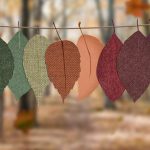Are you curious about how to rate muslin fabric? Look no further! In this article, we will guide you through the process of understanding muslin fabric grades, evaluating its weight, assessing its texture, examining the thread count, and determining its durability.
By the end, you’ll be equipped with the knowledge and skills to confidently rate muslin fabric. So, let’s dive in and discover the secrets of this versatile material!
Table of Contents
Understanding Muslin Fabric Grades
To understand muslin fabric grades, you’ll need to consider factors such as weave tightness and thread count. Grading muslin fabric is essential to assess its quality accurately.
The grade of muslin fabric refers to its overall quality and performance. One of the primary factors to consider when grading muslin fabric is the tightness of the weave. A tighter weave generally indicates better quality as it provides more durability and resistance to tearing.
Additionally, the thread count of muslin fabric plays a crucial role in its grading. A higher thread count signifies a finer fabric with a smoother texture and increased strength.
When assessing muslin fabric quality, it is also important to consider the presence of any imperfections, such as knots or slubs, which can affect its overall grade.
Evaluating Muslin Fabric Weight
You can determine the weight of muslin fabric by simply feeling it in your hands. Evaluating muslin fabric quality involves considering its weight, as this can indicate its thickness and durability. When comparing muslin fabric prices, it’s important to take into account the weight of the fabric, as heavier muslin tends to be of higher quality and therefore more expensive.
Lighter muslin may be cheaper, but it may also be less durable and prone to tearing or fraying.
To evaluate the weight of muslin fabric, hold it between your fingers and feel its thickness. Heavier muslin will feel denser and thicker, while lighter muslin will feel more lightweight and thin. Keep in mind that the weight of muslin can vary depending on its intended use. For example, muslin used for clothing may be lighter and more breathable, while muslin used for drapes or upholstery may be heavier and more sturdy.
When comparing muslin fabric prices, consider the weight in relation to the intended purpose and the quality you desire. Remember that investing in higher quality muslin fabric can result in a longer-lasting and better-performing product.
Assessing Muslin Fabric Texture
Assessing the texture of muslin involves feeling its surface with your hands to determine its smoothness or roughness. Muslin fabric is a versatile material that is commonly used for various sewing projects. It is known for its lightweight and breathable nature, making it ideal for garments such as dresses, blouses, and linings.
When evaluating the texture of muslin, there are a few key factors to consider:
-
Smoothness: Run your hands over the fabric and pay attention to any bumps or uneven areas. Muslin should have a relatively smooth surface without any noticeable texture.
-
Roughness: Check for any rough or scratchy areas on the fabric. Muslin should feel soft and comfortable against your skin.
Comparing muslin fabric to other types of fabric, it is important to note that muslin is often considered a basic or utility fabric. While it may not have the same luxurious feel as silk or satin, it is more affordable and easier to work with. Muslin is also commonly used as a test fabric or a base for creating patterns before cutting into more expensive materials.
Overall, the texture of muslin is a crucial factor to consider when choosing the right fabric for your sewing projects.
Examining Muslin Fabric Thread Count
When examining muslin fabric, it’s important to consider the thread count as it can impact the overall quality and durability. The thread count refers to the number of threads present in one square inch of fabric. A higher thread count generally indicates a denser weave and therefore a stronger fabric. Muslin fabric with a higher thread count will be more durable and less likely to tear or fray easily.
When analyzing the muslin fabric weave, look for a tight and even pattern. A tightly woven muslin fabric will have a smoother texture and will be less prone to snagging or pilling. You can also compare muslin fabric colors to assess the quality. High-quality muslin fabric will have vibrant and consistent colors throughout the fabric. If the color appears faded or uneven, it may indicate inferior dyeing techniques or a lower quality fabric.
Determining Muslin Fabric Durability
Determining the durability of muslin fabric can be done by examining the thread count, weave, and color consistency. To measure muslin fabric shrinkage, you can follow a simple process.
Start by cutting a square piece of muslin fabric, approximately 10 inches by 10 inches. Measure the dimensions of the fabric before washing it. Then, wash the fabric following the care instructions and use a gentle detergent. After washing, dry the fabric using the recommended method. Once the fabric is completely dry, measure its dimensions again. The difference in measurements will give you an indication of the amount of shrinkage that occurred.
Testing muslin fabric colorfastness is also important to determine its durability. To test colorfastness, dampen a white cloth with water and gently rub it on a small, inconspicuous area of the fabric. If the color transfers onto the cloth, it indicates poor colorfastness.
Additionally, you can perform a more rigorous colorfastness test by wetting the fabric and rubbing it with a white cloth that has been soaked in a mild detergent solution. If the color transfers significantly, it suggests that the fabric may fade or bleed when washed.
Conclusion
In conclusion, when rating muslin fabric, it is important to consider its grade, weight, texture, thread count, and durability. Understanding these factors will help you make an informed decision when choosing muslin fabric for your projects.
By assessing the grade, weight, texture, thread count, and durability of the fabric, you can ensure that it meets your specific needs and preferences. Remember to carefully evaluate each aspect to determine the quality and suitability of the muslin fabric for your intended use.
- How Does Ring Spun Cotton Affect Garment Fit and Shape Retention? - August 13, 2024
- What Are the Challenges in Producing Ring Spun Cotton? - August 13, 2024
- Is Ring Spun Cotton Suitable for Plus-Size Clothing? - August 13, 2024



